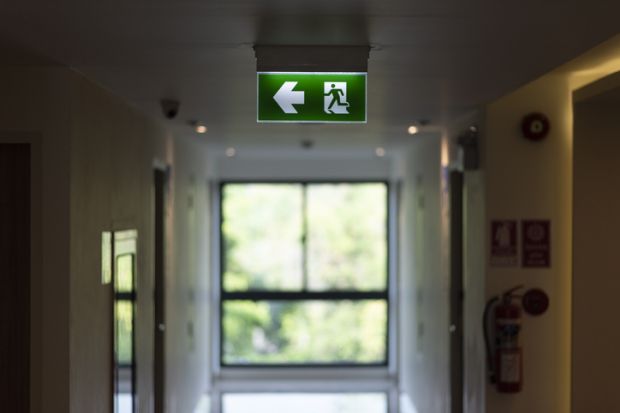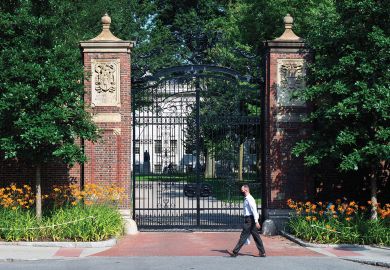The Covid pandemic drove a decline in the share of US undergraduates who returned last autumn for their second year, institutional figures show.
The persistence rate measured by the National Student Clearinghouse Research Center – which tracks data from 97 per cent of US institutions – slipped just below 74 per cent, from a typical rate in recent years nearer to 76 per cent.
The Clearinghouse earlier reported that US freshman enrolment in autumn 2020 was down 13 per cent from the previous year, as incoming first-year students deferred in the face of largely online formats.
While the persistence rate among freshmen heading into their sophomore year appears to have been far less affected, the 2 percentage-point drop still looms large, Clearinghouse officials said.
The losses from those two years “will ripple through higher education for years”, the Clearinghouse’s executive director, Doug Shapiro, said.
The group’s director of research publications, Mikyung Ryu, said she agreed that the 2 percentage-point drop was significant given the consistency of the 76 per cent persistence rate for several years prior to the pandemic.
Yet Dr Ryu acknowledged that the US attrition rate was large either way, and that those students who did not appear for their sophomore year last autumn were probably more likely than average to return to their schooling.
And the pandemic-driven dip in first-year persistence was not unprecedented, as the rate compiled by the Clearinghouse sat below 74 per cent for several years after the Great Recession of 2007-09.
That first-year persistence rate is a critical indicator in higher education because it’s the single largest point at which colleges lose students on their pathway to graduation, Dr Ryu said.
“If students are not going to make it in four to six years,” she said, “most likely they drop out in their first year.”
As with the earlier figures on freshman enrolment, community colleges were hit hardest by the drop in persistence, with 58.5 per cent of autumn 2019 freshmen at the two-year campuses resuming classes in fall 2020, at a loss of 3.5 percentage points.
The situation looks much better for full-time students at public four-year institutions, where the persistence rate was just under 88 per cent in fall 2020, not even half a percentage point below the pre-pandemic level.
The Clearinghouse measure of persistence counts students who return to any post-secondary institution for their sophomore year, not just those who return to their same college.
Retention rates, which count students returning to the same institution, also fell hardest at community colleges, sliding more than 2 percentage points to 52 per cent. Retention increased in the public four-year college sector, up nearly 1 per cent to just above 76 per cent, the Clearinghouse found.
Persistence rate gaps by race and ethnicity held roughly in line with those of recent years, ranging from more than 86 per cent among ethnic Asian students to 65 per cent among black students.
By majors, persistence rates in the liberal arts fell nearly 2 percentage points to 88 per cent among those seeking four-year degrees, while in the biomedical sciences and health care fields they increased by 1.4 and 1.8 percentage points to 82 per cent and 79 per cent.
Register to continue
Why register?
- Registration is free and only takes a moment
- Once registered, you can read 3 articles a month
- Sign up for our newsletter
Subscribe
Or subscribe for unlimited access to:
- Unlimited access to news, views, insights & reviews
- Digital editions
- Digital access to THE’s university and college rankings analysis
Already registered or a current subscriber? Login








